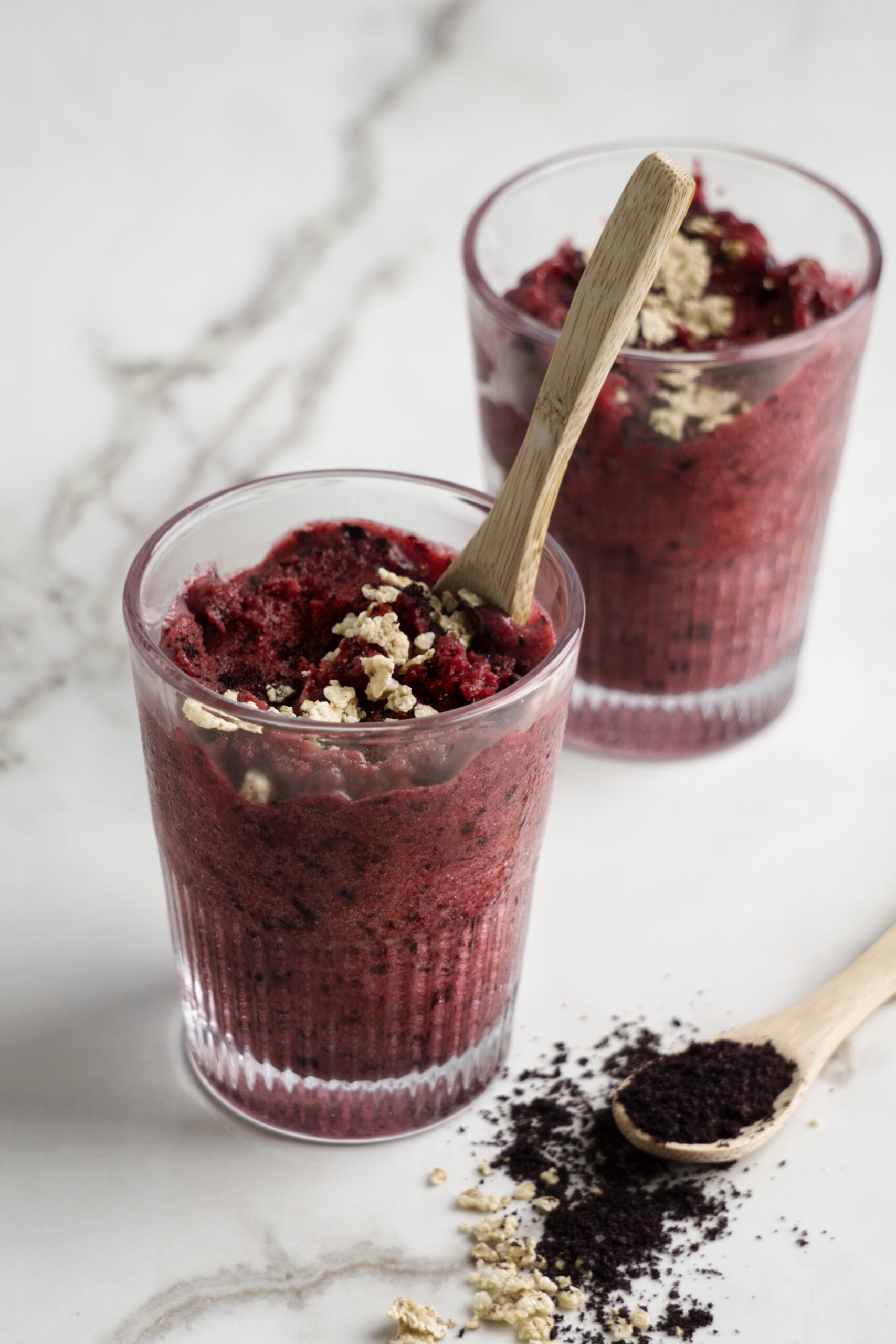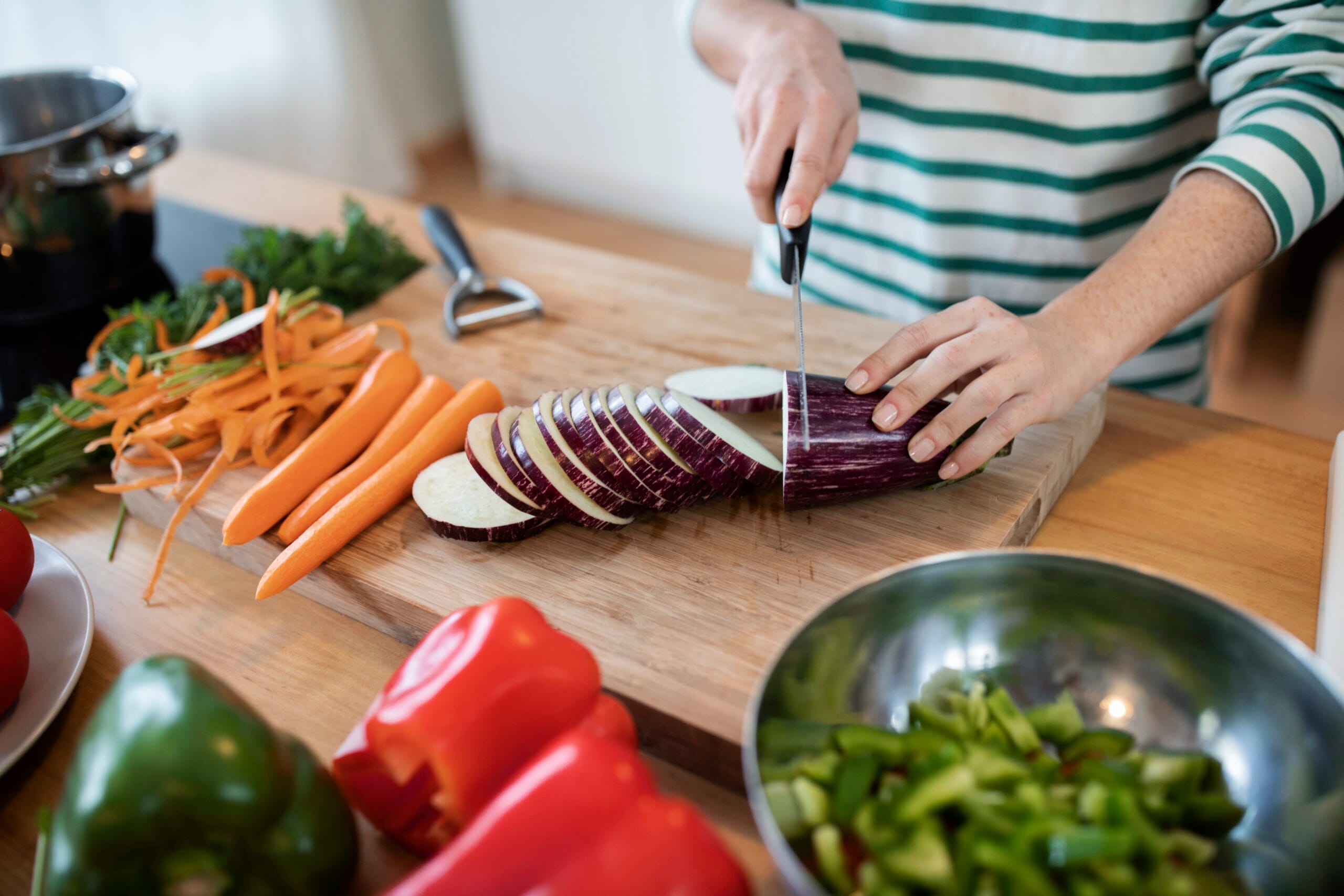- Make the Batter
In a mixing bowl, whisk together 1 cup of whole milk, 1 cup of all-purpose flour, 2 large eggs (at room temperature), 2 tablespoons of vegetable oil, 1 teaspoon of granulated sugar, and a pinch of salt. Mix until the batter is completely smooth and free of lumps. For best results, let the batter rest for 20–30 minutes at room temperature. This allows the flour to fully absorb the liquid and creates tender, pliable crepes.
- Preheat the Pan
Heat a non-stick skillet or crepe pan over medium heat. Once hot, lightly grease the pan with butter or a few drops of oil. Use a paper towel to wipe away excess oil — the pan should be just lightly coated.
- Cook the Crepes
Pour about ¼ cup of batter into the center of the pan. Immediately tilt and swirl the pan to spread the batter into a thin, even circle. Cook for about 1 to 2 minutes, or until the edges start to lift and the underside is lightly golden. Use a thin spatula to gently flip the crepe and cook for another 30 seconds to 1 minute on the other side. Transfer to a plate and cover with a clean towel to keep warm. Repeat with the remaining batter, greasing the pan lightly between each crepe if needed.
- Fill and Serve
Once all the crepes are cooked, fill them with your choice of sweet or savory fillings. Fold, roll, or stack them as desired. Serve warm with fresh toppings like fruit, syrup, powdered sugar, cheese, or herbs — depending on your chosen flavor profile.
Note: Nutrition values do not include fillings or toppings.
- Calories:120 kcal
- Protein:4 g
- Fat:6 g
- Carbohydrates:8 g
- Sugar:1 g
- Cholesterol:55 mg
- Sodium:80 mg
- Calcium:6% DV%
- Iron:5% DV%
Crepes are delicate, paper-thin pancakes from France, loved for their incredible versatility and elegant simplicity. Made with just flour, milk, eggs, and a touch of oil or butter, crepes can be sweet or savory. This makes them ideal for breakfast, brunch, dessert, or even dinner.
This easy crepes recipe yields light, flexible crepes with golden edges and a soft texture. Their mild flavor, with gentle richness from the eggs and milk, makes them the perfect base for all kinds of fillings — from fruits and cream to ham and cheese.
Moreover, their melt-in-the-mouth texture and ability to fold, roll, or stack makes crepes suitable for everything from weekend breakfasts to elegant plated desserts. With minimal ingredients and effort, you can whip up crepes that impress every time.
Sweet and Savory Crepe Filling Ideas
Crepes are incredibly versatile. You can transform them into countless meals or desserts depending on the toppings and fillings you choose. Here are some popular combinations to try:
Sweet Crepe Fillings
- Fresh fruits (strawberries, bananas, blueberries, mango)
- Nutella, chocolate spread, or melted dark chocolate
- Whipped cream, vanilla yogurt, or sweetened ricotta
- Maple syrup, honey, or fruit preserves
- Caramelized apples or pears with cinnamon
- Cinnamon sugar with lemon juice
- Chopped nuts like almonds, pistachios, or walnuts
Savory Crepe Fillings
- Ham and cheese (French crêpe complète with egg)
- Spinach and mushrooms with feta
- Smoked salmon with cream cheese and dill
- Grilled chicken with pesto and mozzarella
- Scrambled eggs with herbs and cheddar
- Roasted vegetables with goat cheese
- Avocado, tomato, and hummus
Creative Ways to Serve Crepes
In addition to fillings, how you serve crepes can add flair and fun:
- Stack them with cream or custard to make a crepe cake
- Fold into triangles and drizzle with sauce for elegant plating
- Roll and slice into pinwheels for appetizers or kid-friendly snacks
- Use them cold as a lunch wrap with fresh veggies and spreads
These ideas not only enhance presentation but also open up more ways to enjoy crepes.
Health Facts – Pros and Cons of Eating Crepes
Crepes can be a lighter option than traditional pancakes or baked goods — especially if made with basic ingredients and healthy toppings.
The Good:
Crepes provide moderate protein from the eggs and milk, along with calcium and B vitamins. Since they’re thin and lower in sugar, they can easily fit into a balanced diet.
The Bad:
However, crepes made with refined flour are low in fiber. Sweet toppings like chocolate, syrup, or whipped cream can raise sugar and calorie levels. Likewise, savory fillings with processed meats or heavy cheese may add sodium and saturated fat.
To make crepes healthier, use whole wheat flour, reduce added sugar, and go for nutrient-rich fillings like fruits, low-fat yogurt, vegetables, or lean proteins.
Final Thoughts
Crepes show how a few simple ingredients can turn into something elegant and satisfying. Whether you’re in the mood for sweet or savory, crepes give you a blank canvas for creativity in the kitchen.
This beginner-friendly crepes recipe is quick, adaptable, and perfect for any occasion. You can serve crepes for a fancy brunch, a light dessert, or even dinner. Best of all, they can be as healthy or indulgent as you want.
Once you master the basic technique, you’ll find yourself making crepes again and again — and impressing guests every time.
















